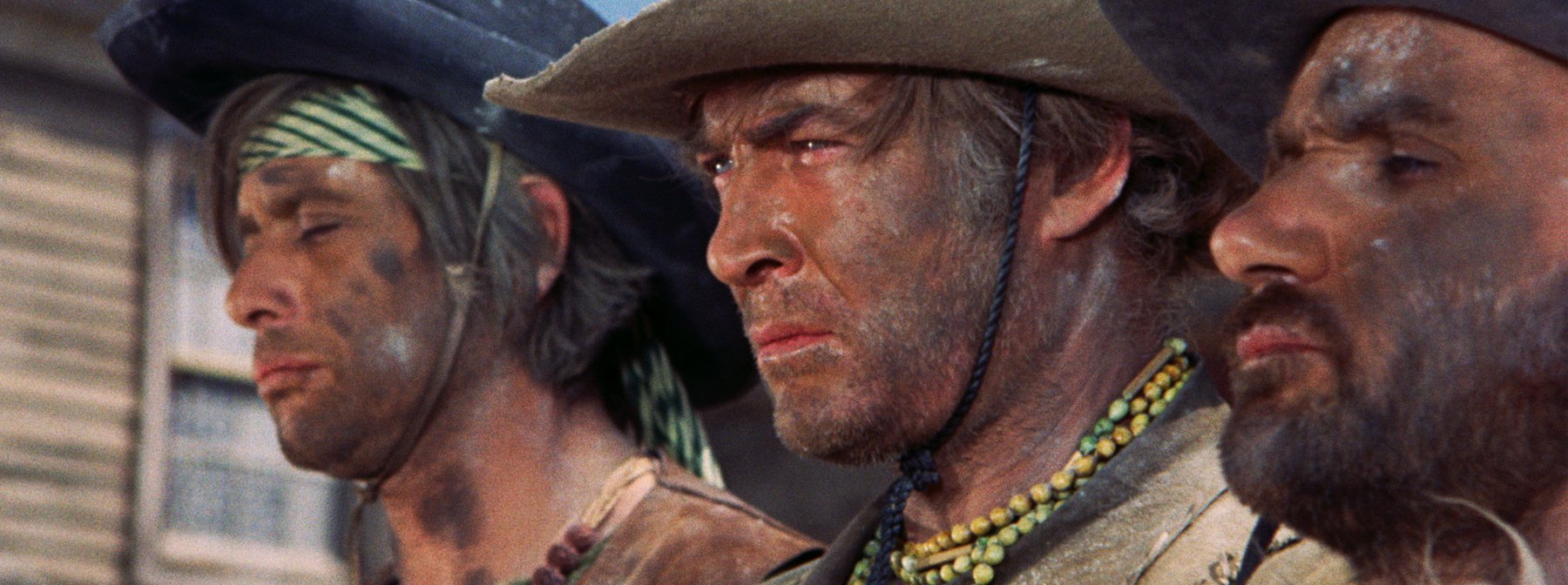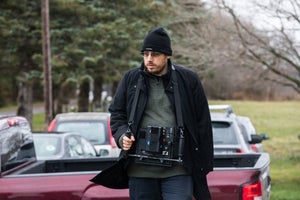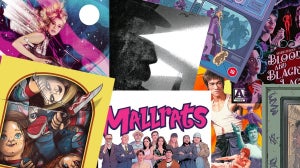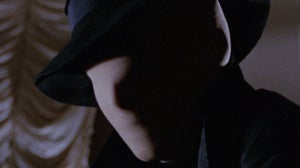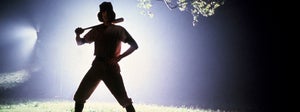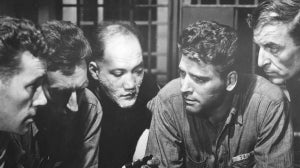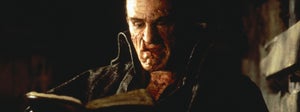
There’s always something inherently fascinating when a film genre – often finding itself past its prime and falling out of popular favour with audiences at home – emigrates and finds a new home (and new fans) abroad. From giant radioactive monsters migrating to Japanese shores to the stalwart Universal Monsters hammering on the doors of UK studios, there’s nothing quite like a fresh pair of cultural eyes to breathe new life into a vanishing movement. More often than not, said movement will not only revitalised but forever changed in cultural consciousness in the process. And so it was when Sergio Leone took the world by storm with his simultaneously genre-reviving and genre-busting international mega-hit A Fistful of Dollars in 1964. Although far from representing the first Euro or Italian-produced Western, Leone’s film announced the birth of the Spaghetti-Western phenomenon as we know it – and forever changed the course and screen identity of one of cinema’s oldest genres.
Defining what sets Spaghetti and Eurowesterns apart from their New World forebears is a daunting exercise – their differences are multitudinous, enormously broad, and steeped in differing (often opposing) cultural sensibilities and tastes. American productions from “the Golden Age of the Western” – ranging from 1940 to 1960 and defined by the likes of Budd Boetticher, Robert Aldrich, Delver Daves, and John Ford – commonly explored themes of rugged exploration, masculine adventure, wholesome colonialism, the reinforcement of myth, and the triumph of good, honest, pure justice. Across the pond, Italian Westerns were never so rose-tinted. You don’t have to conquer any frontiers to find uncompromising, gritty theses on greed, immorality, soulful impurity, and the mundane, everyday evil of man.
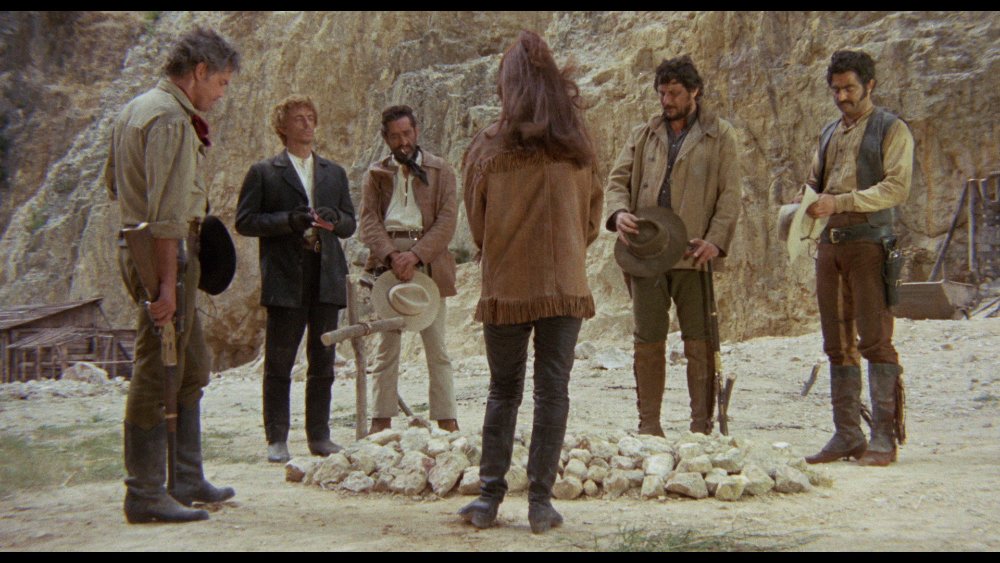
The latter is often characterised by the relentless pursuit of money, wealth, and power by any means. Acclaimed genre favourites such as Tonino Valerii’s Day of Anger (1967), Cesare Canevari’s Matalo! (1970), Giuliano Carnimeo and Hugo Fregonese’s Find a Place to Die (1967), and Sergio Corbucci’s Django (1966) and black-as-night The Great Silence (1968) all dare to tread on some – if not all – of this pessimistic, uncompromising ground with staggering straightforwardness and unrelenting brutality. Indeed, even the most famous of all Italian Westerns – Leone’s legendary Civil War epic The Good, the Bad, and the Ugly (1966) – is entirely staged around the ruthless, self-centred pursuit of gold bullion against the backdrop of a country on the verge of chaotic internal collapse.
At a passing glance from casual viewers, Italian Westerns – with their rural homesteads and ranches, horseback cowboys, saloons and deserts, standoffs, and county jails – might seem indistinguishable from their cousins in the US. Indeed, pictures like Robert Hossein’s Cemetery Without Crosses (1969), Carlo Lizzani’s Requiescant (1967), Giovanni Fago’s Vengeance is Mine (1967), and Romolo Guerrieri’s $10,000 Blood Money (1967) all essentially sing from the Hollywood Western hymn sheet to varying degrees. The difference, however, lies in their presentation, tone, politics, sensibility, and aesthetic – all of which are uniquely and unmistakably European. This isn’t to say the filmmakers spearheading the Spaghetti Western movement disrespected or disregarded their American predecessors – far from it. Leone once characterised John Ford as “a filmmaker whose work I admired enormously, more than any other director of Westerns.”, and would later neatly surmise the differing Italian and American approaches to the genre: “Ford was full of optimism, whereas I on the contrary am full of pessimism.”
In stark opposition to the arguably simpler days of the classic American Western, the Italian West was a cruel, unfeeling anti-frontier where the amoral reigned supreme – you’d never safely bet on the (not so) good guys to come out on top. With a uniquely and uncompromisingly European approach to narrative and characterisation, the best Spaghetti Westerns possess necessary edge, no-nonsense coarseness, and liberal peppering of the chillingly sinister and ominously gothic. With such a unique cultural stew boiling over the campfire, would it be sacrilegious to suggest Italian Westerns simply make their Hollywood counterparts look boring by comparison? The answer lies with the appetites and discretion of the individual viewer.

Outside of Europe, Italian Westerns were long (and unfairly) characterised by filmmakers, critics, and audiences alike as counterfeit imitations of American pictures – perhaps the manifestation of a degree of bitterness and resentment for the demise of the Hollywood Western. In recent decades, however, critical reappraisal has thankfully prevailed. Like the kaiju eiga of Japan, the Spaghetti Western is now regarded not as a pale tribute act, but as a sincere and stimulating genre movement in its own right – one deserving of appreciation, preservation, and celebration. Almost six decades on from their unstoppable mid-sixties heyday, Spaghetti Westerns now sit comfortably alongside Argento, Fellini, and Pasolini as some of the most popular and widely celebrated of Italy’s cinematic exports. Their popularity and acclaim has bred significant success beyond the ruthless badlands of the European West, with several of the genre’s key performers – Tomas Milian, Terence Hill, Bud Spencer, Klaus Kinski, Gian Maria Volonté, and Franco Nero among them – having gone on to become internationally renowned film stars and beloved cult heroes in their own right.
Despite sharply fizzling out in the mid-seventies (in an ironically similar fashion to their Hollywood ancestors), Spaghetti Westerns have persisted as no mere cultural footnote. So great is their continued influence and international popularity that it remains practically impossible to produce a new Western in the 21st Century without a modicum of influence from the work of capable, dedicated Italian genre filmmakers. From Disney’s The Lone Ranger (2013) to John Maclean’s Slow West (2015), to the visual extremes of Takashi Miike’s Sukiyaki Western Django (2007) and James Huth’s Lucky Luke (2009), the cultural, visual, and political influence of the Italian West is here to stay. Spaghetti Westerns represent a vast, untamed, and near-unending cultural frontier – one that you’ll never tire of drifting through and hanging your hat in. And that is one big bowl of pasta worth grabbing a fistful of.

Related Articles

